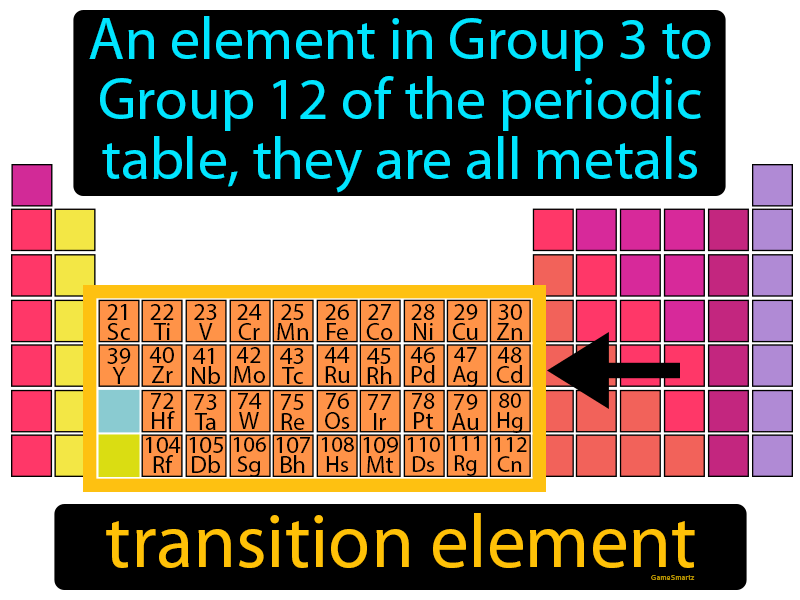

No shell can have more than 32 electrons. Something like gold (Au), with an atomic number of 79, has an organization of 2-8-18-32-18-1. The transition metals are able to put up to 32 electrons in their second-to-last shell.

You need to remember that those electrons are added to the second-to-last shells. This is the point in the periodic table where you can place more than 8 electrons in a shell. Scandium (Sc) is only 3 spots away with 21 electrons, but it has a configuration of 2-8-9-2. It has 18 electrons set up in a 2-8-8 order. Transition metals are able to put more than eight electrons in the shell that is one in from the outermost shell. Not all of them, but we are sure you've seen pictures of silver (Ag), gold (Au), and platinum (Pt). You will usually find that transition metals are shiny, too. They have a lot of electrons and distribute them in different ways. Transition metals are good examples of advanced shell and orbital ideas. We like introducing students to the first eighteen elements, because they are easier to explain. It all has to do with their shells/orbitals. When ingested in large quantities, most heavy metals, including several of the nutritionally essential transition metals, are highly toxic and nearly all are potentially carcinogenic.Let's start off by telling you that there are a lot of elements that are considered transition metals. Nutritionally or genetically induced deficiencies of these metals are associated with a variety of pathologic conditions including pernicious anemia (Fe), Menkes disease (Cu), and sulfite oxidase deficiency (Mo). Zinc finger motifs provide the DNA-binding domains for many transcription factors, while Fe-S clusters are found in many of the enzymes that participate in DNA replication and repair. Transition metals are key components of numerous enzymes and electron transport proteins as well as the oxygen transport proteins hemoglobin and hemocyanin. In general, transition metals are sequestered in organometallic complexes within our bodies, enabling their properties to be controlled and directed where needed, and their propensity to promote the generation of harmful reactive oxygen species is minimized. Maintenance of human health and vitality requires the ingestion of trace levels of numerous inorganic elements, among them the transition metals iron (Fe), manganese (Mn), zinc (Zn), cobalt (Co), copper (Cu), nickel (Ni), molybdenum (Mo), vanadium (V), and chromium (Cr). Provide an operational definition of the term “heavy metal,” and list three strategies for treating acute heavy metal poisoning.ĭescribe the processes by which Fe, Co, Cu, and Mo are absorbed in the human gastrointestinal tract.ĭescribe the metabolic role of sulfite oxidase and the pathology of sulfite oxidase deficiency.ĭescribe the function of zinc finger motifs and provide an example of their role in metal ion metabolism. List four benefits obtained by incorporating transition metals into organometallic complexes in vivo.Ĭite examples of the ability of a given transition metal to function as an electron carrier in one protein, an oxygen carrier in another, and a redox catalyst in yet another.Įxplain how the possession of multiple metal ions enables the metalloenzymes cytochrome oxidase and nitrogenase to catalyze the reduction of molecular oxygen and nitrogen, respectively.ĭescribe two mechanisms by which excess levels of transition metals can be harmful to living organisms. Provide a rationale for why zinc is a common prosthetic group in enzymes that catalyze hydrolytic reactions. Understand how Lewis and Bronsted-Lowry acids differ.ĭefine the term complexation as it refers to metal ions. Understand the importance of multivalency to the ability of transition metals to participate in electron transport and oxidation–reduction reactions. After studying this chapter, you should be able to:Įxplain why essential transition metals are often referred to as micronutrients.


 0 kommentar(er)
0 kommentar(er)
